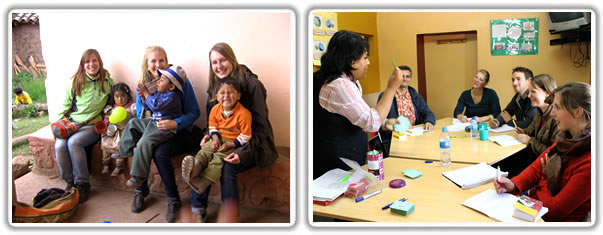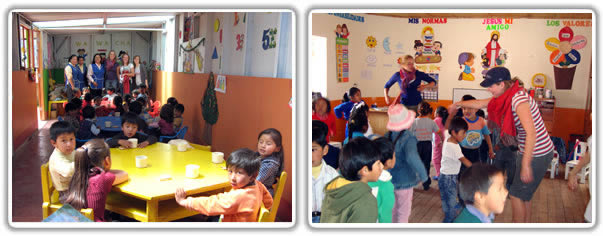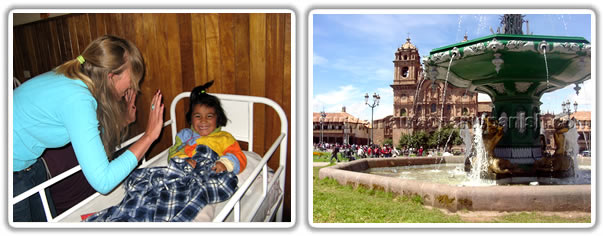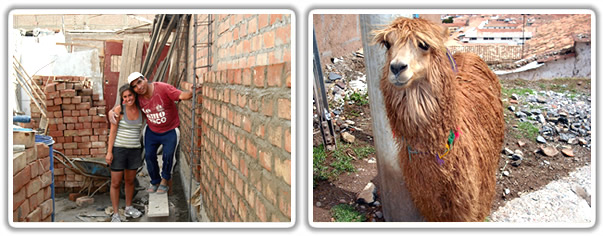Categories
Links
Archives
Tag Cloud
One language, different ways of celebrating Christmas in Latin America
Author: adminViews 17.647 19 dic
Christmas in Latin America known as Navidad is one of the most important events in the year. It is celebrated with even more devotion than in other parts of the world due to the omnipresence of Christianity; after all, Christmas is centered around the age-old story of Jesus’ birth on the 24th of December.
For most Latinos it is very much a religious holiday with families attending together the Misa de Gallo (Mass of the Rooster because it usually finishes at 1 am when the rooster announces the coming day). Christmas Eve or Noche Buena really is the time of giving, but many Latin American families also keep alive the Día de los Tres Reyes. Those children who have behaved themselves well will receive a second round of presents on January 6th from the Three Wise Men, just like they did after Jesus was born.
Besides all the similarities, there is great influence from the different indigenous people of the region and many Latin American cultures hang on to their own curiosities during Christmas time:

Chile
In Chile they do a toast with a monkey’s tail. Not what you might think, but the cola de mono is a traditional Christmas cocktail made with milk, coffee, sugar, cinnamon and brandy. Father Christmas is known as Viejito Pascuero who wishes everyone a Feliz Navidad. And at New Year’s Eve they have the habit to burn huge dolls made out of old clothes, paper and wood with the fire supposedly eradicating all the bad and purifying the start of the New Year.
(más…)
Preparation Tips for Volunteering in Latin America
Author: adminViews 14.786 15 nov
To volunteer in Latin America you can really contribute and give something back to the local communities where you are travelling. It does, however, require a lot of effort and dedication on your side. The following tips will go a long way to ensuring that you are well prepared for your time in Latin America:
- Learn some Spanish! Either study a bit before you come or take classes when you arrive. The ability to communicate with others is indispensable, wherever you are volunteering. This, along with a bit of country research, pays dividends as you will feel settled-in much faster. We can arrange for online Spanish lessons over Skype with some of most established Spanish Schools in South America. The teachers, from either Peru or Argentina, will be able to teach you some important verbs in a very intuitive manner and meanwhile you can get used to the accent!
- Keep in mind the reasons for volunteering; there may be times where things get a bit too much and have your reasons set clear will help you when you’re feeling low.
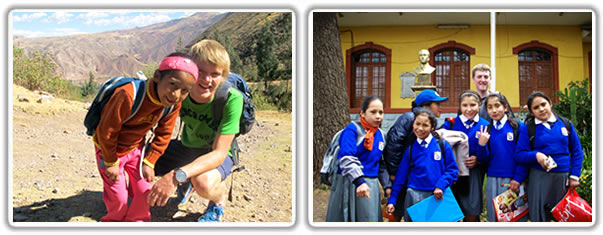
Spanish & Volunteer in Peru: full immersion!
Author: adminViews 13.751 11 sep
The "Spanish + Volunteer combo" provides you the unique opportunity to experience first-hand the rich cultural diversity of Peru, while developing your Spanish skills. If you want to truly enjoy your time in Cusco while integrating into Latin American culture, than this is the ideal program for you!
The Spanish language course consists of 20 lesson hours per week and is held in a group environment and based on a total immersion model with a lot of practical fieldtrips. The native teachers focus on quickly teaching you the necessary vocabulary and conversational skills enabling you to communicate while volunteering, even if you arrive as a complete beginner. You may also decide to study Spanish for a week in one of the other locations offered by the language institute, in the beautiful and peaceful Sacred Valley of the Incas or the sensational Tambopata Reserve part of the Amazon jungle.
Volunteers celebrate 12 years anniversary at volunteer project in Cusco Peru
Author: adminViews 5.775 17 feb
In Cusco Peru, our volunteers & volunteer coordinator celebrated the 12th anniversary of one of our volunteer projects, the Unión de Ciegos.
At 10 am everyone came together, the community of the blind people, their families and friends and others who were invited.
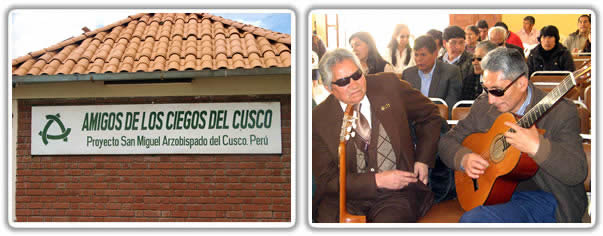
At 11 am there was a mess and at 12 am they started a program with music, dances, theatre and a speak of different persons. Afterwards we had a delicious lunch with chicken, potatoes, a big piece of cake as a dessert and wine.
(más…)
Volunteers donate in Cusco Peru
Author: adminViews 7.370 26 ene
Tamara van der Houwen and Willeke van Geest were two volunteers in Cusco , who participated in the Spanish and Volunteer Program of AMAUTA Spanish School. They worked in one of our after school projects in Cusco, where many kids go after school do receive something to drink, to eat, and some assistance with their homework.. Also, it is just a place where they can go, meet a friend, or relax. Those places a very necessary, as in many hoses, there is no one home for the kids, when they are done with school….
Experience volunteering at a clinic for mental health in Peru
Author: adminViews 14.825 4 jun
I had a wonderful experience volunteering at a clinic for mental health in Peru. I really enjoyed the freedom they gave me in the job.
I began, with beginners Spanish, making art with the lowest functioning patients. As my Spanish improved, I changed my schedule to incorporate some psychology workshops with the higher functioning patients. Observing the workshops at first, I learned about the focus of the group and before I knew it, I was leading the workshop when the nurse was not present.
Testimonial about a clinic for mentally and phsycially disabled
Author: adminViews 5.670 4 jun
The project where I worked, is a great project for anyone, even if you only have a day to volunteer. It´s a clinic for mentally and phsycially disabled children and it comes “ready-made” with things to do.
If you volunteer in the mornings, you will be expected to help finish getting the children dressed for the day, feed them lunch, play with them and help clean them up or put them to bed for a nap. The clinic really needs volunteers on weekends as well, especially during the evenings as there are fewer nurses available and very few or no volunteers. With less people around, the kids sit around doing very little when they could really use some stimulation.
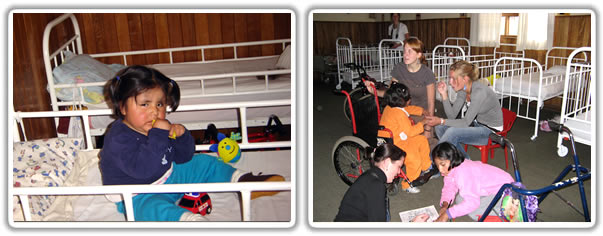
I love this project: the kids are happy, engaging, and generally excited to see you. As a therapist with a background with special-needs kids, I have been allowed access to the therapy room and can choose which children I want to work with. It is up to me to use what kind of therapy or skills I want to provide for that child (not all children here receive therapy). Not only is there a lot of freedom in this aspect, the clinic is also flexible in regards to your schedule. When I can’t make it during the week, I was allowed to make up my time on the weekends. The children love spending time in their large playground, playing with toys in their rooms, going for walks (or wheelchair races) around the clinic.
(más…)
Volunteer Work-Cusco Peru March 8-April 8,2010
Author: adminViews 5.905 28 may
This volunteer work has allowed us to experience the universal magic of childhood in a culture very different from our own. Thank you for the opportunity to work with Rossana, Elizabeth, Marina, Raul, and Marlene, and of course the very junior citizens of Cusco.
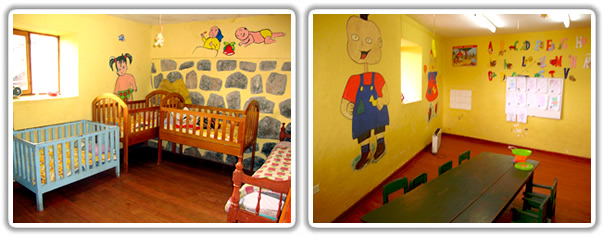
We have been made to feel very welcome at the centre. The staff has been patient with our emerging Spanish abilities and have even offered us introductory Quechua! The hours are well suited to morning people and leave a good portion of the day available for more Spanish classes, exploring, or shopping. The volunteers’ Spanish classes were very helpful in arming us with the necessary “imperativo” form of communication – “!No hagas eso!”, “!No grites!” etc.
(más…)
Volunteer Work in Pisco – Travels in Peru
Author: adminViews 9.536 28 may
When I first came to South America I was consumed with thoughts of Argentina. Thus when my housemate decided to take a trip up to Peru a month into our stay I was caught a little bit off guard. My initial reaction: why would anyone want to leave a place this great so soon? With time, however, the thought of accompanying her became more and more appealing and a month after my friend first breached the subject, we were on the road headed to Pisco, Peru.
Why Pisco? (For those of you who are unfamiliar with South American geography: Pisco is a tiny city on the South West Coast of Peru; let´s just say it didn´t exactly make the cut for top ten places to visit in Peru, it claims two pages in SA’s Lonely Planet’s guide). Given our intents to volunteer, however, the lack of tourist attractions in Pisco was not exactly an issue . Indeed, our time was kept busy with the construction of houses for local families. Not only did this experience add some real substance to my travels in SA, but it was incredibly fun as well. If you have the time to do some volunteer work during your stay I highly recommend it.

